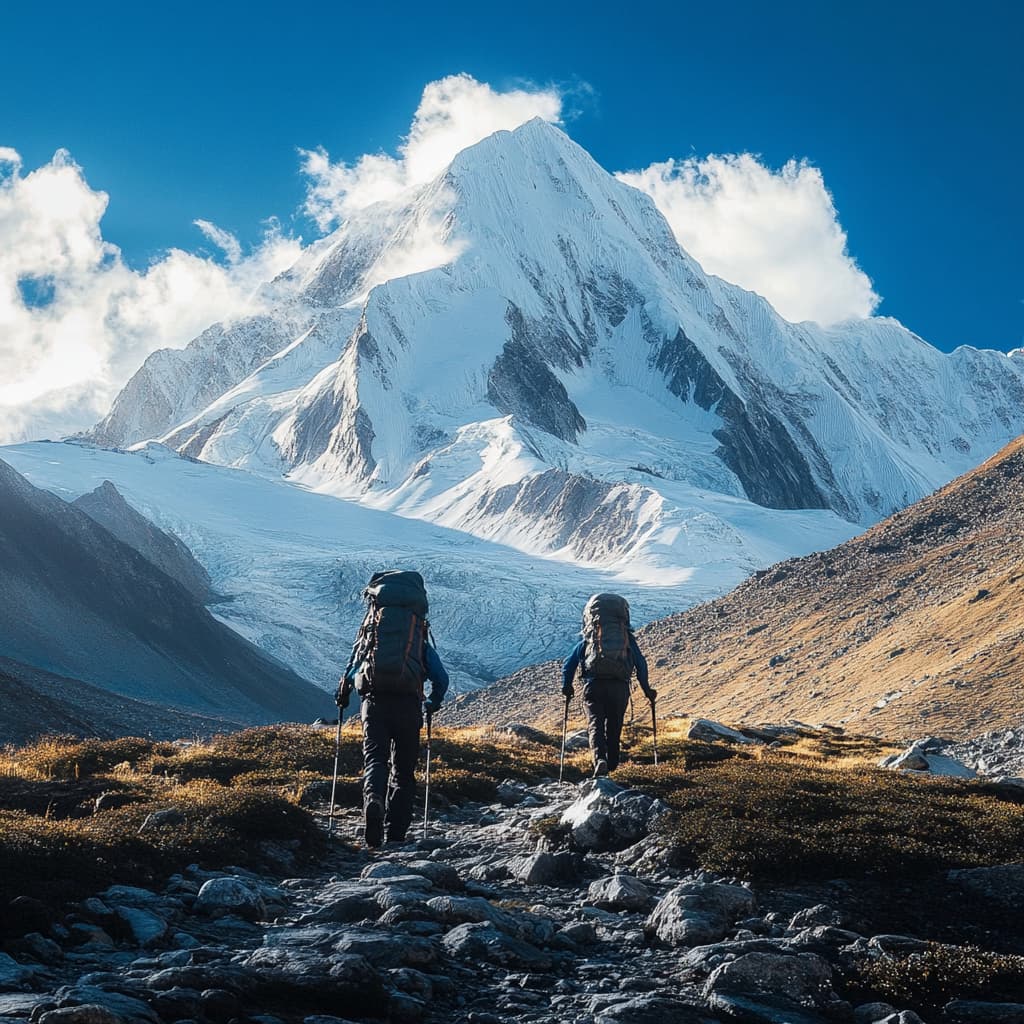The Impact of Altitude on Physical Condition and How to Adapt in the Mountains

Mountains offer some of the most breathtaking experiences for outdoor enthusiasts — from panoramic landscapes to thrilling hikes. Yet, behind the beauty lies a physiological challenge: altitude. As elevation increases, oxygen levels decrease, and the body begins to feel the effects. Whether you’re a seasoned mountaineer or a first-time hiker, understanding how altitude affects your body and how to adapt is essential for both safety and performance.
What Happens to the Body at High Altitudes?
At sea level, the air is dense and packed with oxygen. As we ascend, the air pressure drops and oxygen molecules become more dispersed. This means that with every breath, your body gets less oxygen — a condition known as hypobaric hypoxia.
When the body detects lower oxygen availability, it begins a cascade of responses:
- Increased breathing rate (hyperventilation): The body tries to compensate for less oxygen by breathing faster.
- Elevated heart rate: To deliver oxygen more efficiently, the heart works harder, pumping faster than usual.
- Reduced performance and endurance: With less oxygen, muscles fatigue faster, and even simple tasks feel more strenuous.
- Sleep disturbances: Many people experience disrupted sleep at high altitudes due to irregular breathing patterns during rest.
- Fluid shifts: The body may retain fluids in the brain or lungs, which can contribute to serious altitude illnesses.
These responses are part of the body’s natural effort to adapt, but they also come with discomfort, and in some cases, real danger.
Altitude Sickness: A Serious Risk
The most common health issue in high altitudes is Acute Mountain Sickness (AMS), which typically begins above 2,500 meters (8,200 feet). Symptoms include:
- Headache
- Nausea
- Dizziness
- Fatigue
- Shortness of breath
If left untreated, AMS can progress to more serious conditions like:
- High-Altitude Pulmonary Edema (HAPE): Fluid accumulation in the lungs, leading to breathlessness and potentially fatal outcomes.
- High-Altitude Cerebral Edema (HACE): Swelling of the brain, causing confusion, poor coordination, and even coma.
These conditions can develop rapidly and must be taken seriously. Fortunately, they are preventable with proper preparation and response.
Who Is at Risk?
Altitude affects individuals differently. Some can ascend quickly without significant issues, while others experience symptoms at relatively low elevations. Risk factors include:
- Genetics: Some people naturally cope better with hypoxia.
- Rate of ascent: Rapid increases in elevation increase the likelihood of sickness.
- Exertion: Strenuous activity before acclimatization puts additional stress on the body.
- Hydration and nutrition: Poor hydration and nutrition can exacerbate symptoms.
- Previous altitude experience: While helpful, past success doesn’t guarantee future tolerance.
Even elite athletes and experienced hikers are not immune to altitude sickness, so preparation is key.
How to Adapt to High Altitudes
Adaptation, also known as acclimatization, is the body’s way of adjusting to reduced oxygen availability. Here’s how to support this natural process:
1. Ascend Gradually
The most important rule is: go slow. Allow your body time to adjust.
- Above 2,500 meters, gain no more than 300-500 meters (1,000–1,600 feet) of sleeping elevation per day.
- Every 3,000 meters (about 10,000 feet), take a rest day for acclimatization.
If you’re flying into a high-altitude location (such as Cusco or La Paz), spend a day or two at intermediate elevations first.
2. “Climb High, Sleep Low”
This mountaineering mantra suggests that you can hike to higher altitudes during the day but should descend to lower elevations to sleep. It exposes your body to altitude stress while allowing it to recover overnight.
3. Stay Hydrated
Dehydration mimics symptoms of altitude sickness. Higher elevations increase water loss through respiration and urination, so drink more than you would at sea level. However, avoid overhydration, which can cause hyponatremia (low sodium levels).
4. Eat a Balanced Diet
A high-carbohydrate diet supports energy demands and helps the body use oxygen more efficiently. Small, frequent meals are often easier to digest, especially when your appetite is reduced.
5. Rest and Pace Yourself
Take it easy, especially during the first few days. Listen to your body. Even moderate activity can feel intense at altitude. Adequate rest allows the body to focus on acclimatization rather than recovery.
6. Avoid Alcohol and Smoking
Both impair oxygen delivery and hydration — two critical elements for altitude adaptation.
7. Use Medications When Appropriate
Some travelers use acetazolamide (Diamox) to speed acclimatization. It helps balance blood pH and stimulates breathing. However, consult your doctor before using any medication.
Training and Pre-Conditioning for Altitude
If you plan to travel or compete at elevation, you can prepare your body in advance:
- Live high, train low: This method, used by athletes, involves living at altitude to stimulate adaptation while training at lower altitudes for performance.
- Simulated altitude training: Hypoxic chambers or masks simulate low oxygen conditions and may aid pre-acclimatization.
- Cardiovascular fitness: While fitness alone doesn’t prevent altitude sickness, a healthy heart and lungs improve oxygen delivery.
If you don’t have access to these tools, regular hiking and cardiovascular training will still benefit your performance.
Recognizing and Reacting to Symptoms
It’s critical to monitor your condition and those of your companions. If you experience moderate to severe AMS symptoms, the best remedy is to descend. Even a few hundred meters can bring relief.
Avoid the temptation to “push through” — altitude-related illnesses can escalate quickly. Know when to stop, rest, or turn back.
Final Thoughts
Exploring the mountains is one of life’s most rewarding experiences, but it demands respect for nature and your own physiology. By understanding how altitude affects your body and taking steps to adapt, you can safely enjoy the heights — from alpine trails to towering peaks. Preparation, patience, and mindfulness are your best allies when ascending into thin air.
Whether you’re hiking in the Rockies, trekking to Everest Base Camp, or exploring the Andes, the key to thriving at altitude lies in listening to your body and embracing the journey — one step, one breath, and one view at a time.
